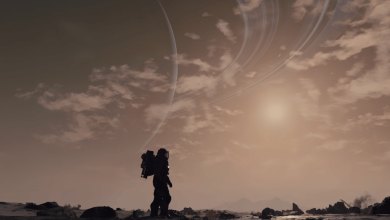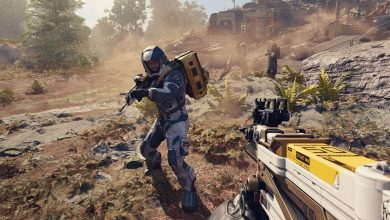If you thought your PC could run Starfield at maximum settings, 1440p at over 60-80 frames per second, think again! Starfield is one of those games that rely heavily on your GPU. Hence, you need to tweak some settings in order to get a decent boost in performance at a minimal graphical quality loss. So, I’ve gathered a mix of community advice and personal testing to bring you my Best Starfield Settings guide to help you get started with improving the game’s FPS.
I’ve tested Starfield on the following PC specifications:
- CPU: Core-i5 12400f
- GPU: RTX 4070
- RAM: 16GB DDR4
- Storage: 2.5TB SSD
- Operating System: Windows 10
You’ll at least need an AMD Ryzen 5 2600X or Intel i7-6800K CPU, AMD Radeon RX 5700 or Nvidia GTX 1070 Ti GPU and 16 GB RAM to run Starfield.
These are the most demanding settings that impact your FPS in Starfield:
- Shadow Quality
- Indirect Lighting
- Reflections
- Volumetric Lighting
- Crowd Density
- GTAO Quality
- Contact Shadows
Starfield is a game that was practically broken at launch. Aside from several stability issues, I could barely push 60 FPS with my RTX 4070 when I first tested the game. Even at times, I was able to gloss past the low FPS, I constantly encountered crashes and stuttering while running around the hub areas. Our Starfield reviewer Asad also faced all these issues in addition to texture glitches during his time with the game.
Starfield Best Display Settings
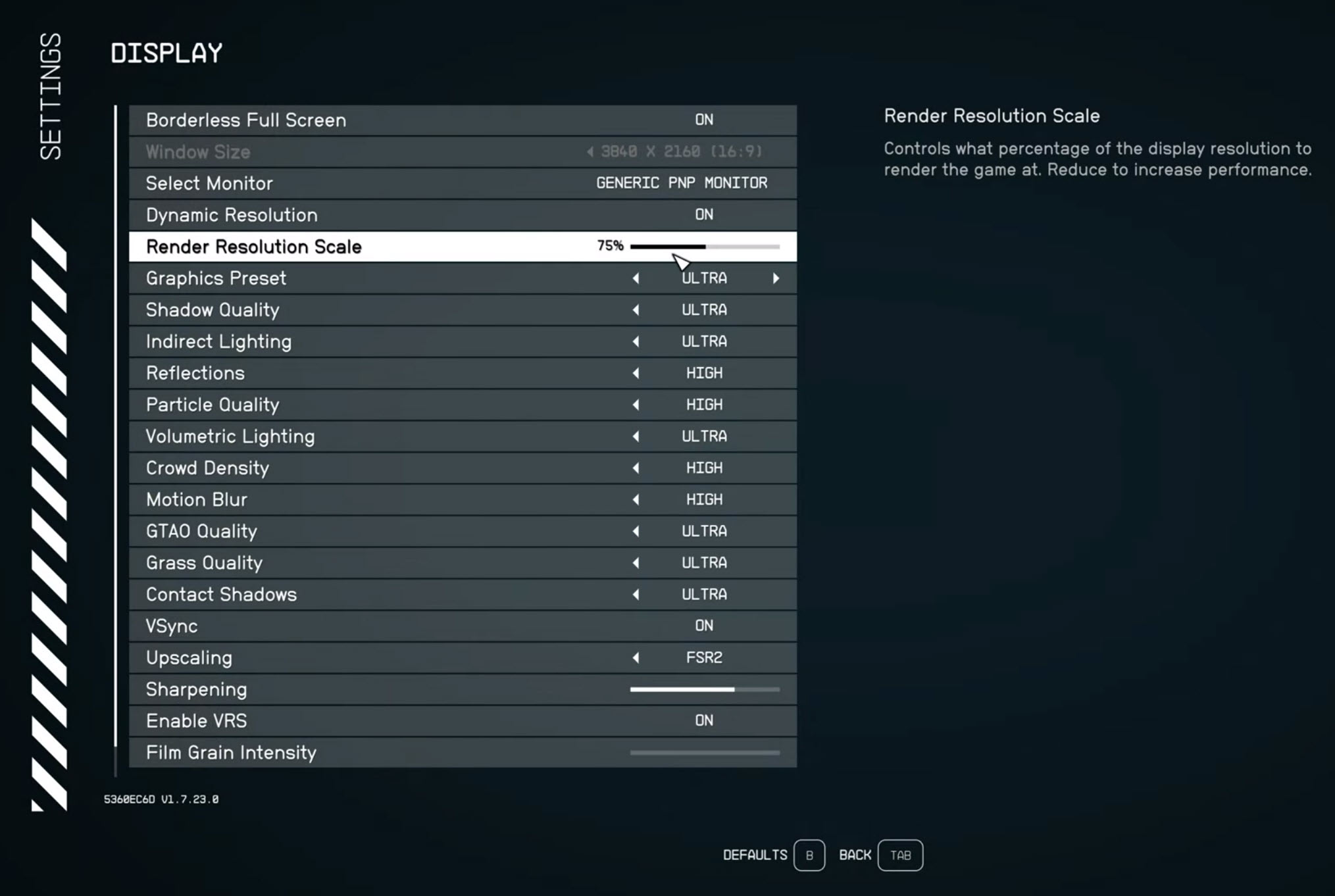 The Display Settings in Starfield (Image by eXputer)We’ll be taking you through each of the Starfield Settings in its display menu and show you what impact each setting preset will have on the game’s performance on your PC. Having the optimal display settings will help you overcome issues like Starfield Crashing.
The Display Settings in Starfield (Image by eXputer)We’ll be taking you through each of the Starfield Settings in its display menu and show you what impact each setting preset will have on the game’s performance on your PC. Having the optimal display settings will help you overcome issues like Starfield Crashing.
Borderless Full Screen: ON
Starfield does not have an exclusive full-screen mode, which offers significantly better performance. So, you’ll have to make do with Borderless Full Screen mode to get a near-exclusive full-screen mode experience. The alt-tabbing out of the game might be easy, but I’ve personally experienced steering in-game. I recommend turning off Full Screen Optimization in the game’s properties features to reduce the stuttering.
Window Size: Auto Selected
If you’re playing the game on Borderless Fullscreen mode, then the resolution will be auto-selected to your monitor’s native resolution. If you want to change the resolution, you’ll have to turn Borderless Fullscreen mode off, which will change Starfield to Windowed Mode.
Dynamic Resolution: ON
If you ask me personally, I turned Dynamic Resolution off. I have a decent GPU to run the game without resorting to letting the game reduce my resolution mid-gameplay. This made textures and environmental objects really blurry for me.However, If you want the absolute best performance boost, then I recommend that you turn Dynamic Resolution on and apply some level of Sharpening from either in-game settings or your Nvidia or AMD driver applications.
Render Resolution Scale: 75%
By default, the game has Render Resolution set to 75%, which is what you should set to as well. The reason why I’m not recommending a 100% resolution scale is that we’ll be using FSR2 as an upscaler. It works great with 75% when it comes to improving resolution quality.
Graphics Preset: Custom
We’ll be fine-tuning everything here in order to have the Starfield settings. So, we don’t need to use a pre-determined graphical preset. Hence, Custom is the way to go.
Shadow Quality: Medium
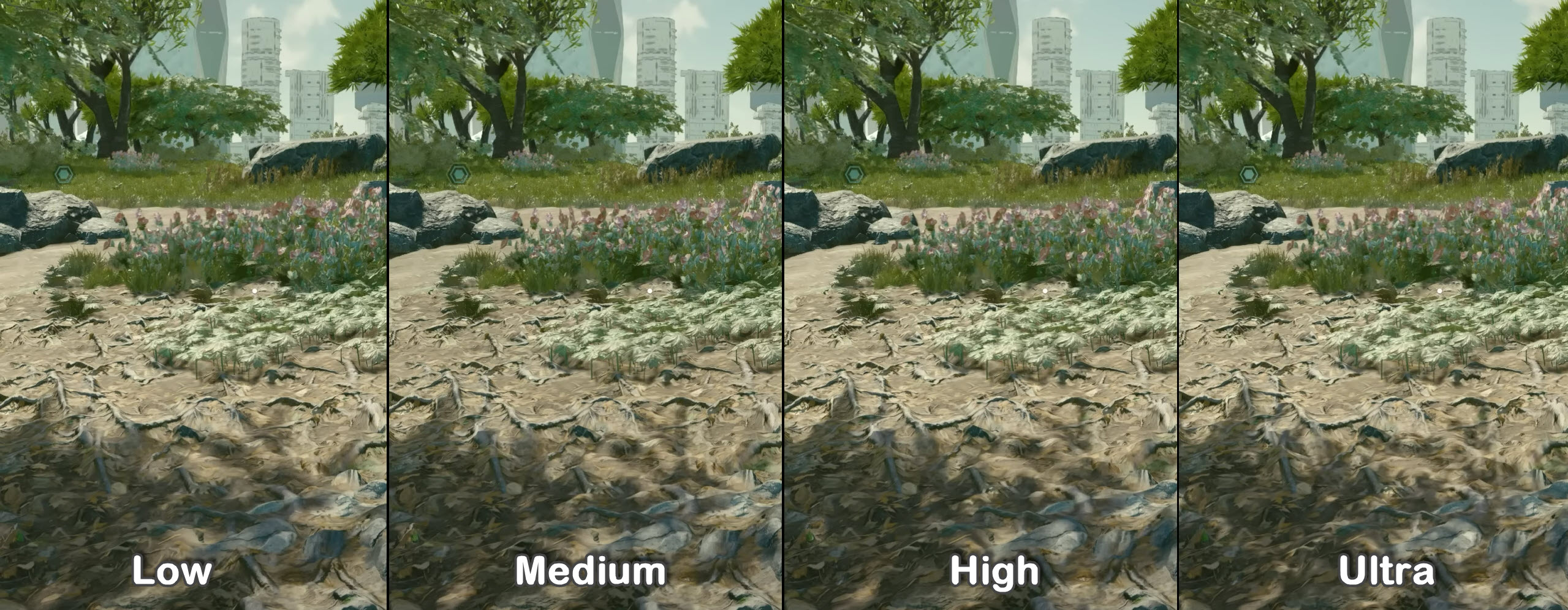
Shadow quality makes a huge impact on the game’s visuals. If you move from ultra preset to low, the draw distance for shadows decreases substantially. Low is definitely not worth it as it has only an 8% performance improvement over medium. However, setting the Shadow Quality to medium from ultra will net you a 25-30% performance improvement.
Indirect Lighting: High
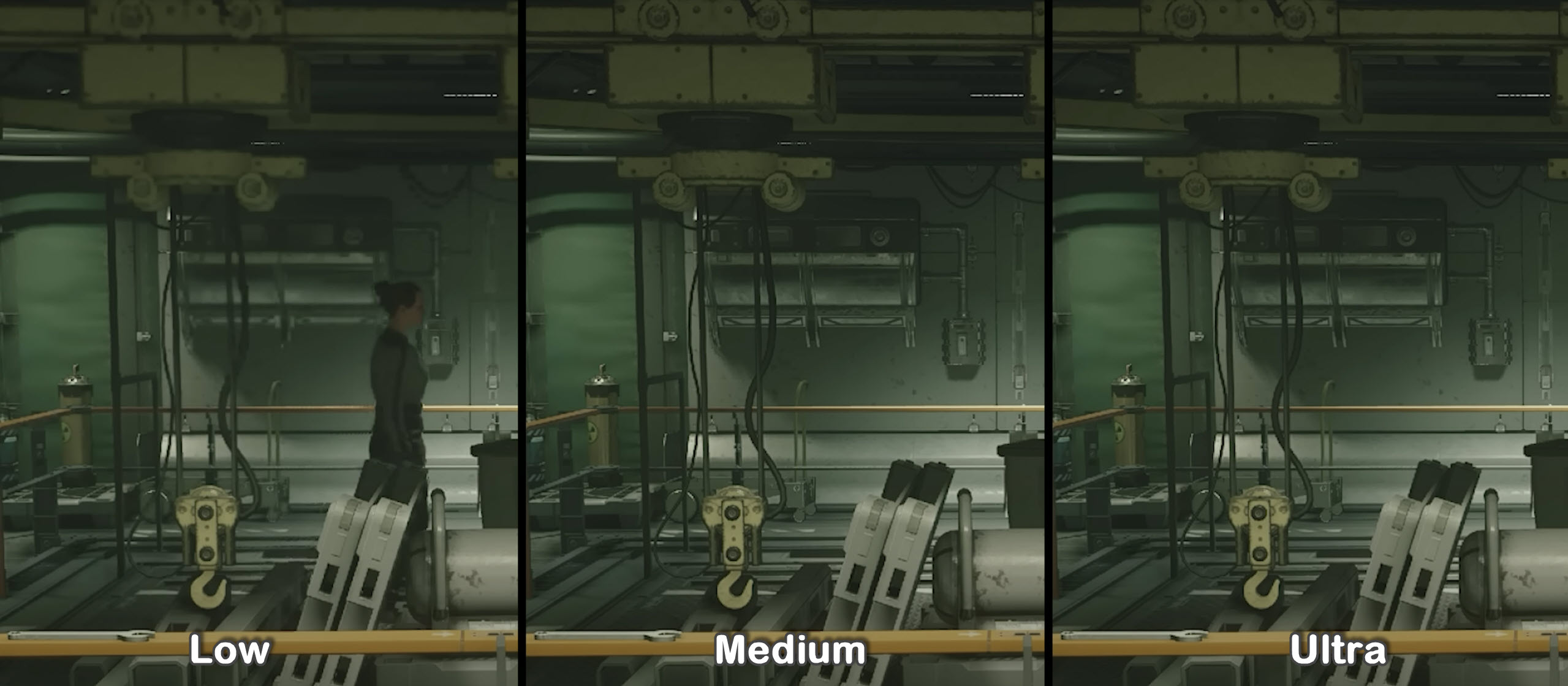
As of writing, the Indirect Lighting feature in Starfield has not had such a performance impact on the game. Maybe it’s not working as intended and will be fixed in a later patch. So, for now, I’ve set it to High. If it gets fixed in a future patch and decreases your performance, you can lower it according to your requirements.
Reflections: Medium
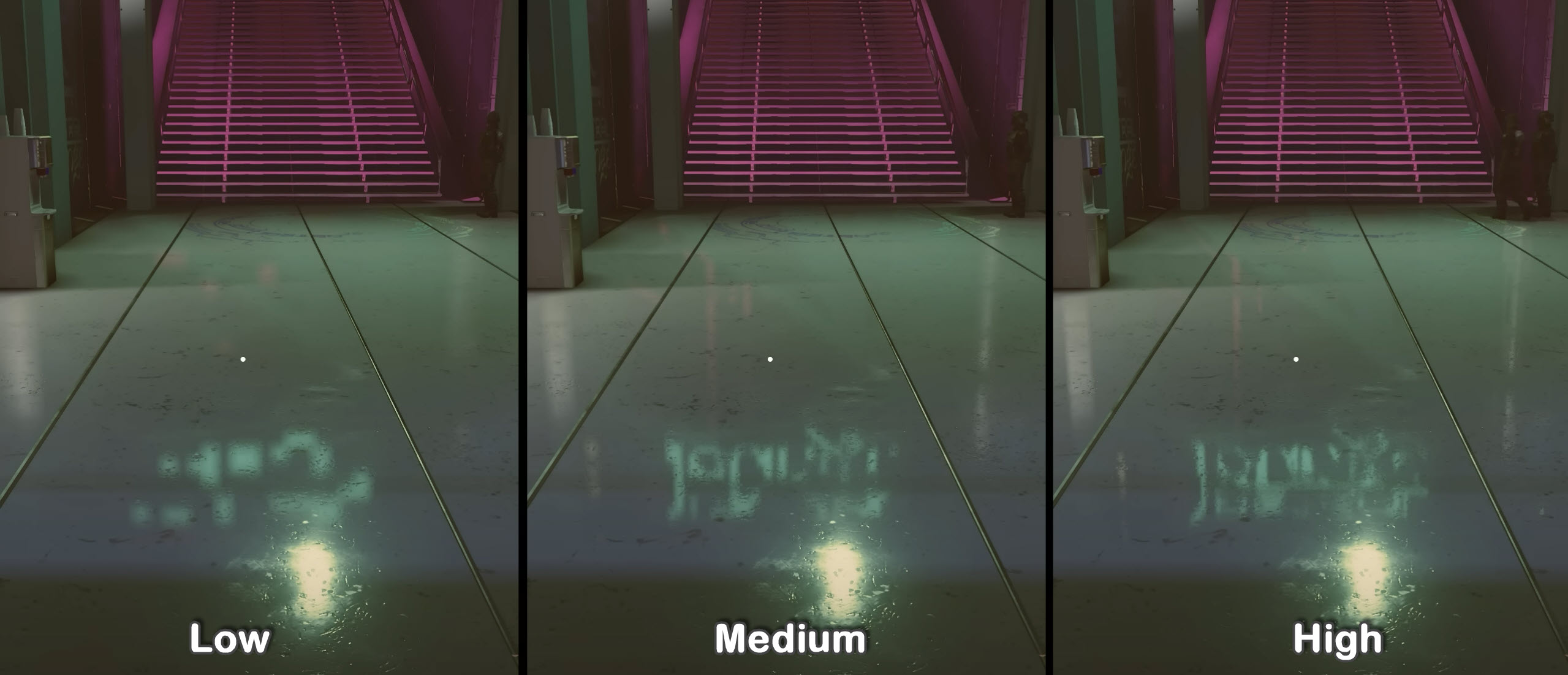
The reflections will be in effect on shiny surfaces like water bodies or glass on buildings. Switching from High to Medium will net you a nice 3% boost in performance with a minor graphical quality loss. However, switching to low nets, you only get a 1% additional boost with quite bad reflections.
Particle Quality: High
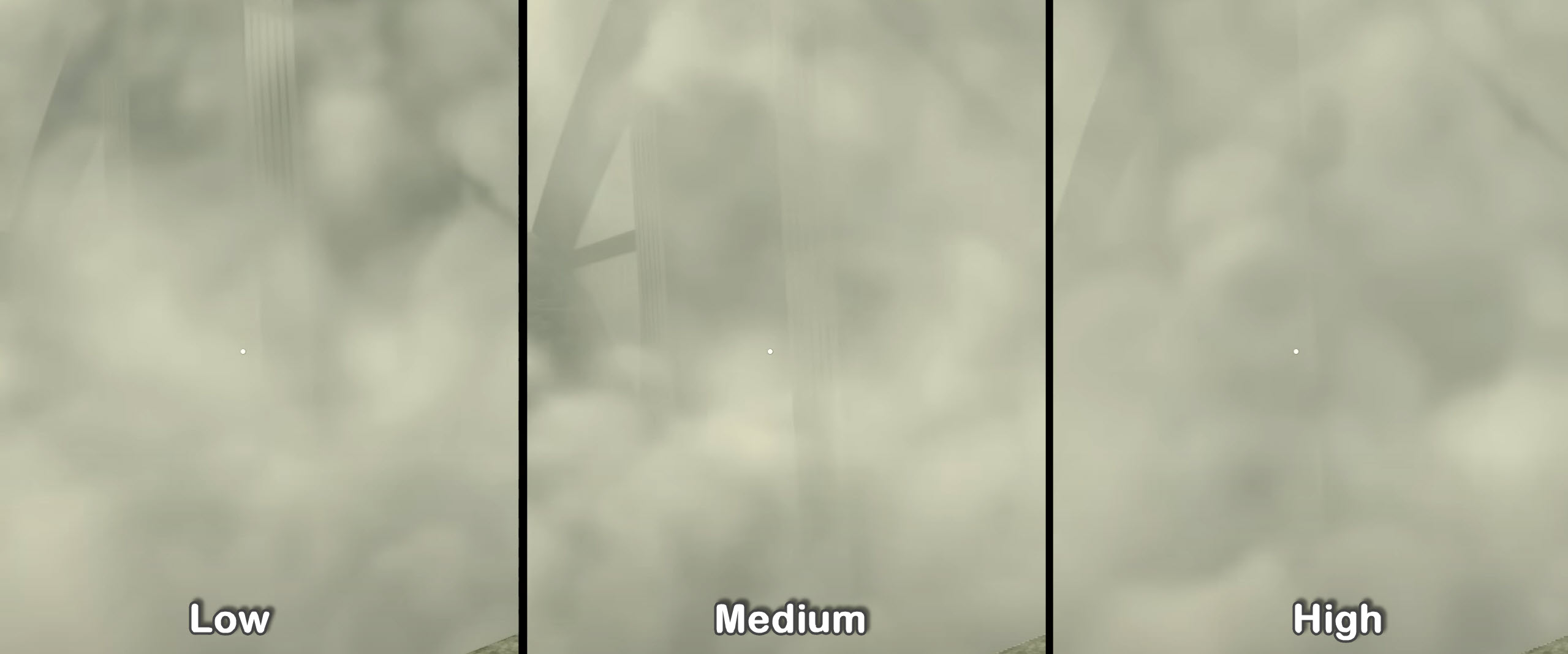
Particle quality is also like indirect lighting setting. It has little to no impact on your performance as of now. So, high is a suitable option for it. If you’re really fishing for FPS, you can switch it to medium for a minor 2% performance improvement.
Volumetric Lighting: Low
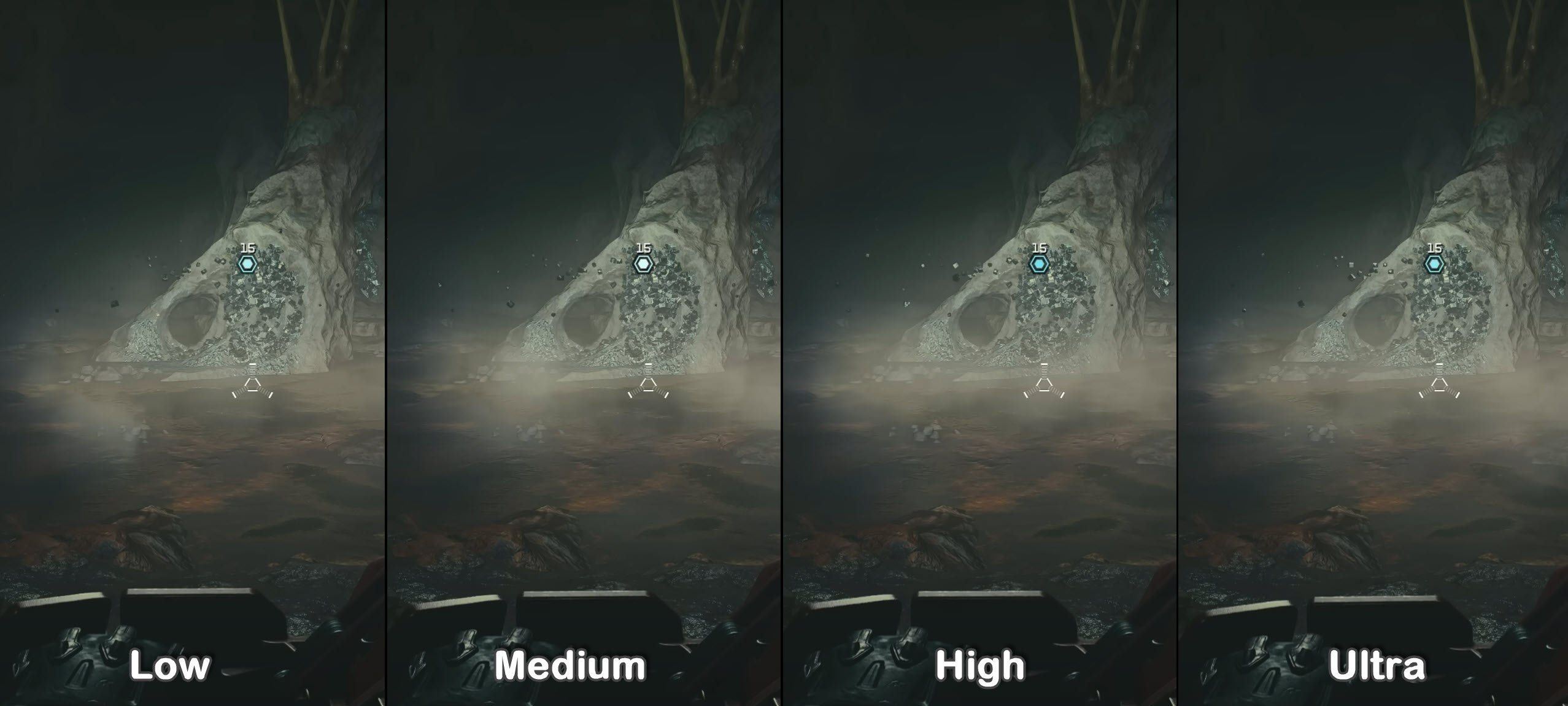
Volumetric Lighting controls the quality and the resolution of the volumetric effects like light shining through fog, sun rays through a window, etc., In Starfield. There’s a minor difference between low and high in average gameplay, but you’ll get a nice 5% performance boost with it.
Crowd Density: High
The world of Starfield looks the most lived-in when you’ve set the Crowd Density to high. It doesn’t have much performance impact as you’ll only get a 2-3% gain by reducing it to low, which isn’t worth it.
Motion Blur: OFF
The Motion Blur setting in Starfield combines both object and camera motion blur into one setting. So, if you’re already falling short of FPS, it’ll only make your game look laggy. So I’ve personally switched it off as it looks really bad on my PC. It also gives you a 2% boost in performance, so I guess it’s a win-win.
GTAO Quality: High
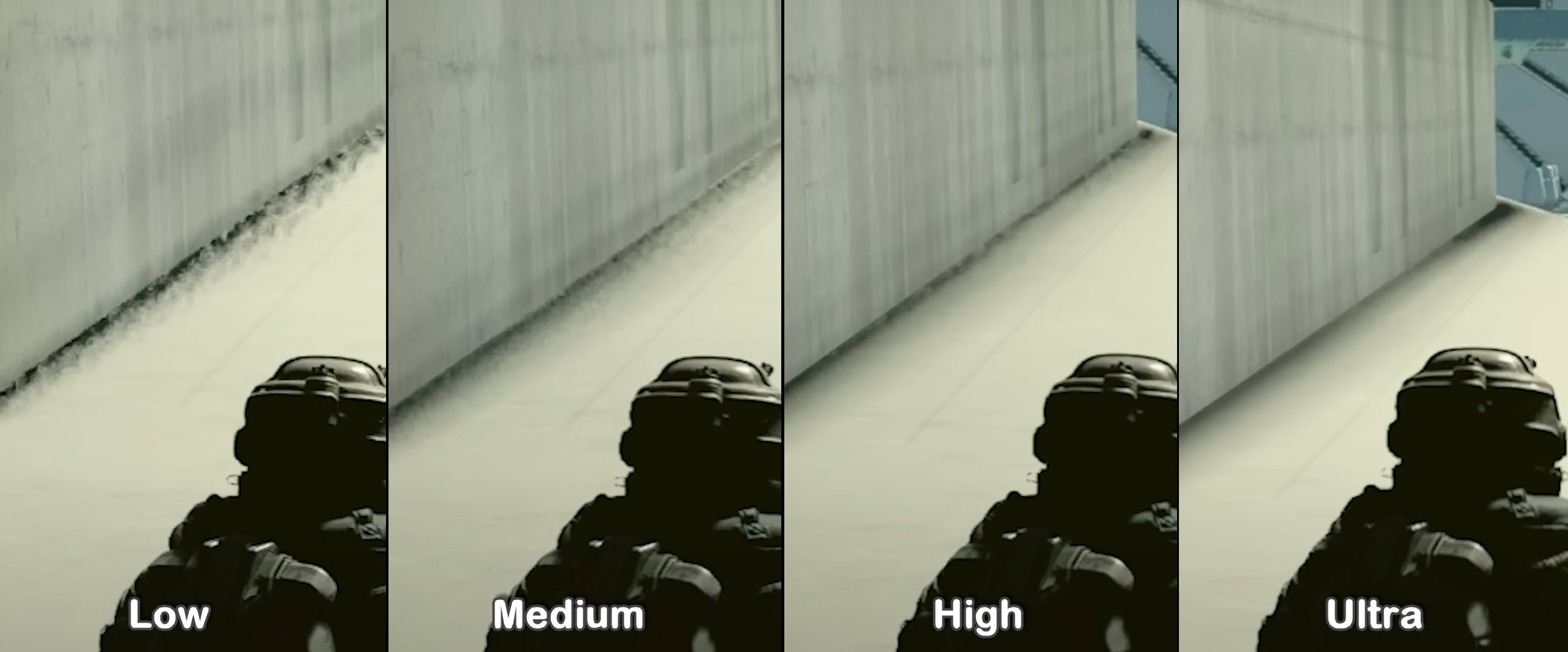
GTAO quality controls the Ambient Occlusion in Starfield. This means that if you want an in-depth world with proper shadowing between objects and not flat-looking surfaces, you should set GTAO to high. High and Ultra are almost indistinguishable.
Grass Quality: Ultra
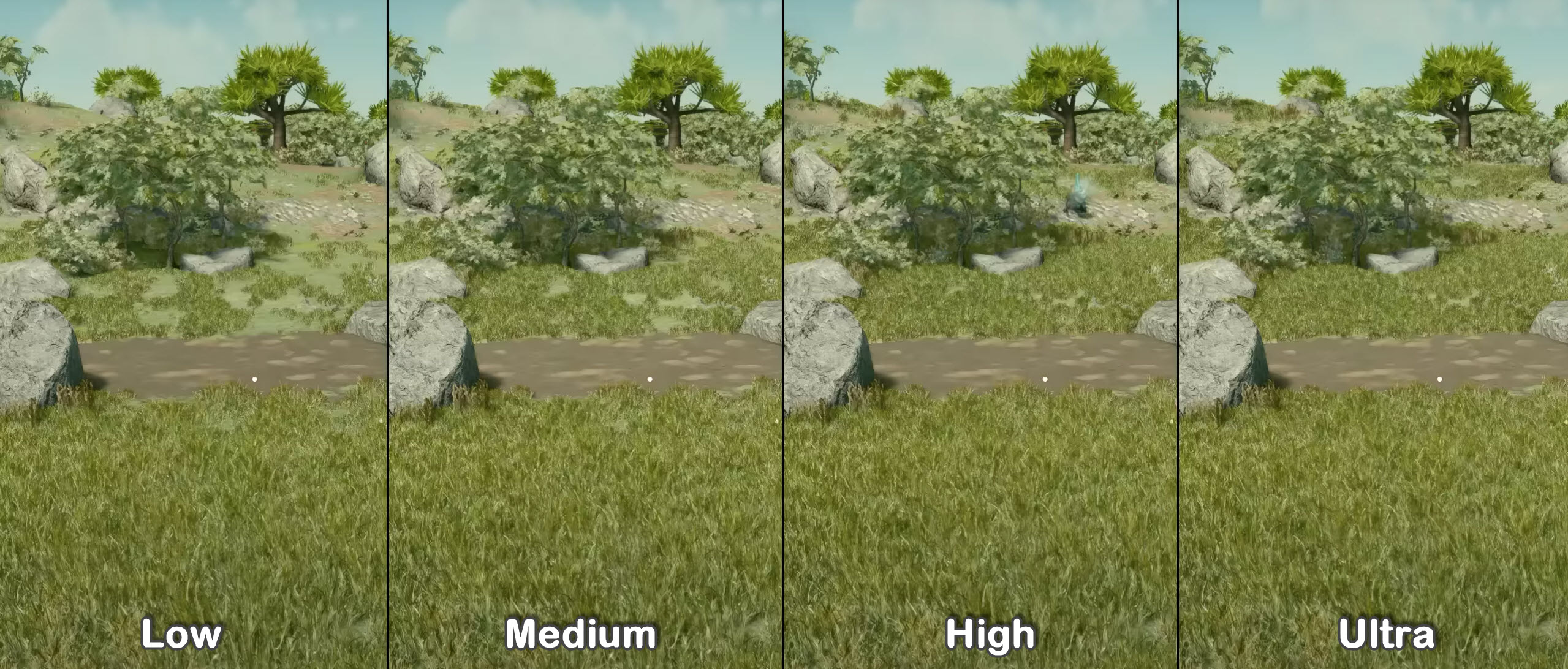
Alright, this is the first setting that we chose to select Ultra for. Ok, hear me out! Grass Quality affects the draw distance for grass in your environment, especially the forested areas outside the cities. Now, the lower the quality you set, the lesser the draw distances will be, but there’s no performance impact, either positive or negative, by either Low or Ultra, at least not on the GPU side of things. Hence, Ultra is the best option for Grass Quality.
Contact Shadows: Low
Contact Shadows is a very subtle graphical effect that adds depth to objects in-game. Now, from Low to Ultra, none of the presets have any difference between them, at least at the time of writing. So, you should go for Low, as it also gives you a nice 3% performance boost.
VSYNC: ON
In most games, I always instruct my readers to turn on Vsync as the input latency increase you get out of this is simply the worst. Plus, the game also feels laggy and suttery. However, Starfield started crashing for several players, and a common solution that people found was turning on Vsync.So, you should first try playing by turning off the Vsync, and if your game becomes unstable, then simply turn it On to avoid any hitches mid-game.
Upscaling: FSR2
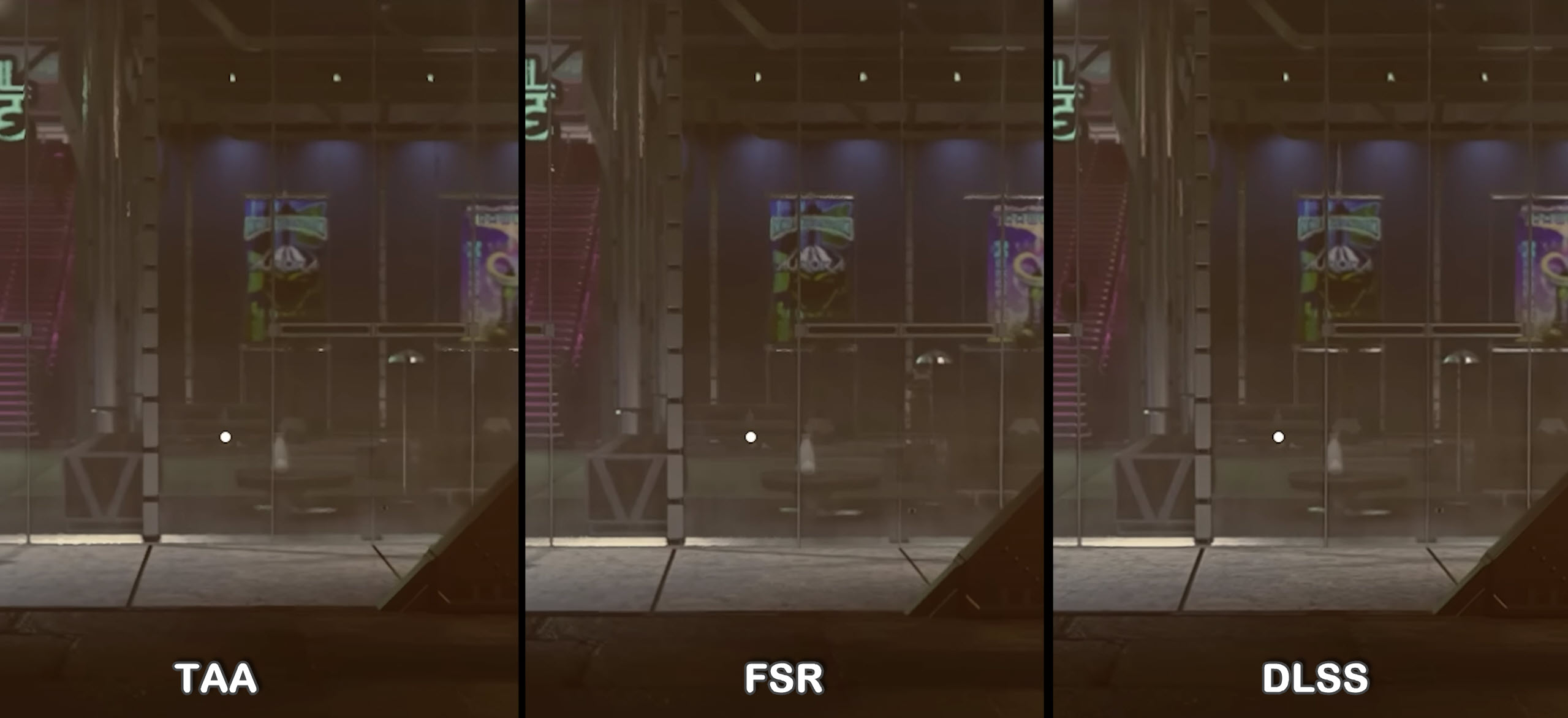
I’m genuinely a fan of AMD FSR 2.0 upscaling technology here. AMD is even the official PC partner for Starfield. Still, Bethesda somehow goofed up the FSR2 implementation in Starfield. For many players, the FSR2 upscaler makes the objects shimmer more and introduces aliasing instead of doing the opposite and making the image better with AI. However, since we want the absolute best performance in Starfield, FSR2 is the way to go. You can also use DLSS in Starfield by installing a third-party mod. Check out our guide to find out how!
Sharpening: Your Preference
Sharpening is an aesthetic filter to make the texture look more crisp and less blurry. You can start by putting the slider at 50% and then increasing or decreasing it from there according to your taste. I’d personally recommend setting it to more than 50%, as the game’s quite blurry if you aren’t playing it on high-end resolutions.
Enable VRS: ON
Variable Rate Shading (VRS) in Starfield has no performance impact on your gameplay, and neither was I able to spot any visual differences in different scenes. It’s best to keep it on as turning it off drops your performance very slightly.
Film Grain Intensity: OFF
Film Grain simply ruins the quality of the image, and I still stand by my words that this shouldn’t exist in games. But I guess everyone has their preference, but I highly recommend that you turn it off to enjoy clear visuals in Starfield.
Enable Depth Of Field: ON
Depth of Field is a nice Bokeh effect in gameplay, which you won’t mostly notice, but when you do, it looks good aesthetically. It doesn’t have any performance impact as well, so keeping is on is the best move here.
How Much Performance Did You Gain?
We’ve listed all the best Starfield settings that you can use in your copy of the game to improve performance drastically. Starfield just got released, and it’ll need a few performance patches to get into its best shape. Until that happens, I hope the best settings guide is able to make your gameplay experience better. For everything else on Starfield, make sure to keep visiting eXputer.
FAQs
You’ll need to upgrade your PC if you don’t have the right components listed in at least the minimum system requirements of Starfield. You can also apply our best settings listed in this guide to improve performance even more.
Well, this depends on the combination of CPU and GPU that you have. If your setup falls anywhere between minimum and recommended requirements, you can expect 30 to 40 FPS in Starfield.
You’ll need a minimum of 16GB of RAM to run Starfield on your PC.
Do you feel that you need an additional performance boost in Starfield? Check out our dedicated performance guides below:
- Best Nvidia Control Panel Settings: FPS & Performance [2023]
- Best AMD Settings: FPS & Performance [2023]
- Best Windows 10 Settings/Optimization For Gaming
Here’s more on Starfield by eXputer:
- Starfield How to Install DLSS Mod
- Starfield Best Graphics Settings
- Starfield Into The Unknown Bug [FIXED]
- How To Fix Starfield Not Downloading
- Starfield Unable To Log In Error [SOLVED]
Thanks! Do share your feedback with us. ⚡
How can we make this post better? Your help would be appreciated. ✍
Why Dynamic Resolution On? It ruins the image quality
i like to play on medium settings so that i can get higher frames
Even though i have a low end PC I can still play this game with reasonable FPS thanks to this guide
